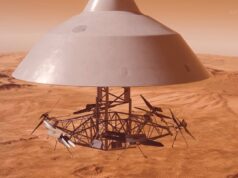In this video, we’re diving into the fascinating story of Venera 4, the space probe that dared to venture into the unknown and attempt the first-ever landing on Venus. Follow the evolution of Soviet engineering as they ingeniously adapted their approach, turning the failures of Venera 4 into future triumphs, and celebrate their achievement of landing on Venus eight times – an accomplishment yet to be surpassed after 50 years (and counting).
source.image: Primal Space
The main carrier spacecraft 4 stood 3.5 metres (11 ft) high, its solar panels spanned 4 metres (13 ft) and had an area of 2.5 square metres (27 sq ft). The carrier spacecraft included a 2 metres (6 ft 7 in) long magnetometer, an ion detector, a cosmic ray detector and an ultraviolet spectrometer capable of detecting hydrogen and oxygen gases. Watch the video from Primal Space:
The devices were intended to operate until entry into the Venusian atmosphere. At that juncture, the station was designed to release the probe capsule and disintegrate. The rear part of the carrier spacecraft contained a liquid-fuel thruster capable of correcting the flight course. The flight program was planned to include two significant course corrections, for which purpose the station could receive and execute up to 127 different commands sent from the Earth.
Advertisement
The capsule could float in case of a water landing. Considering the possibility of such a landing, its designers made the lock of the capsule using sugar, it was meant to dissolve in liquid water, releasing the transmitter antennas. The capsule contained a newly developed vibration-damping system, and its parachute could resist temperatures up to 450 °C.











